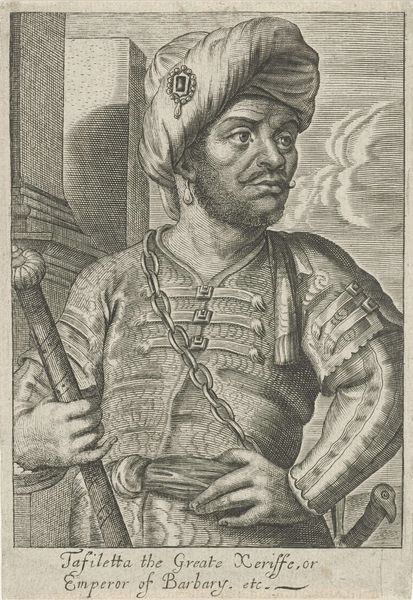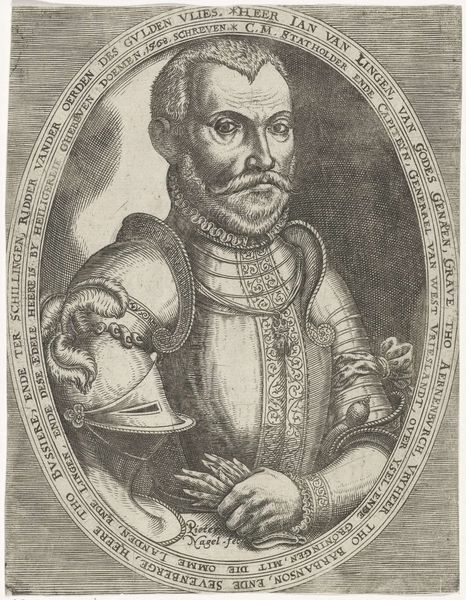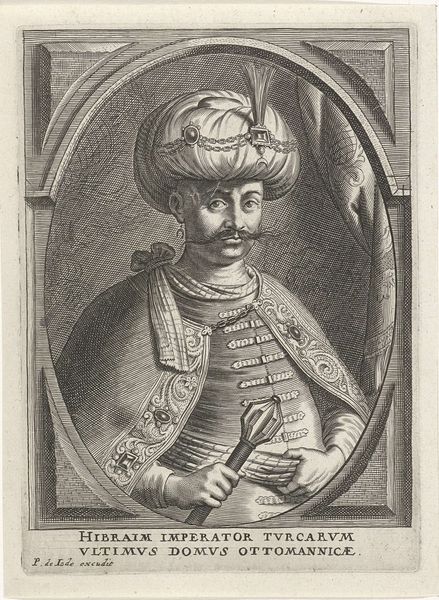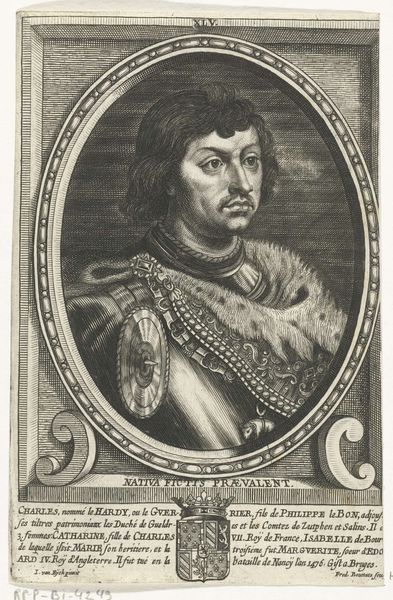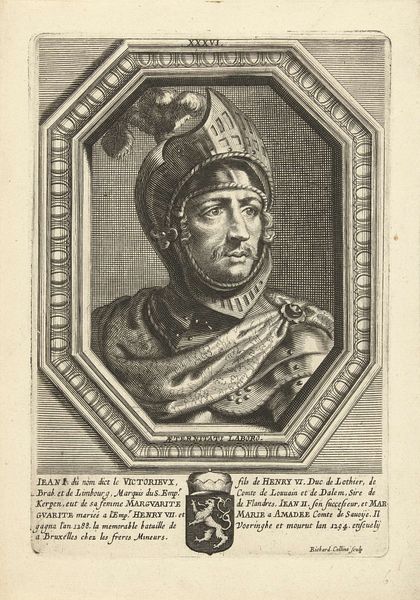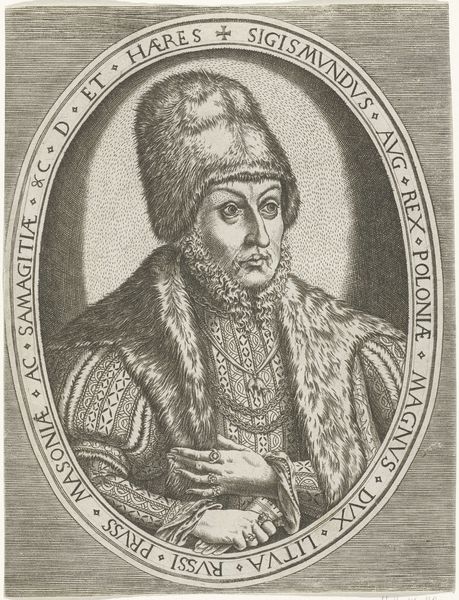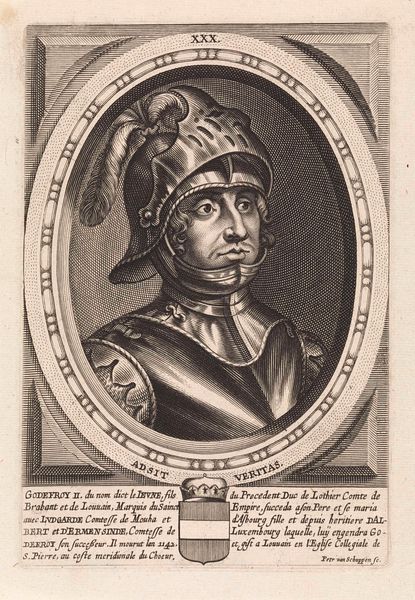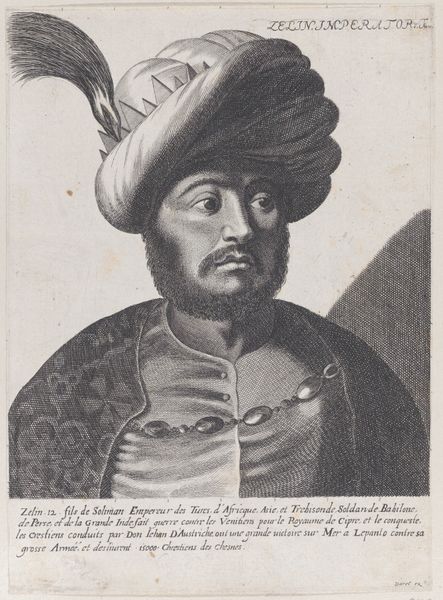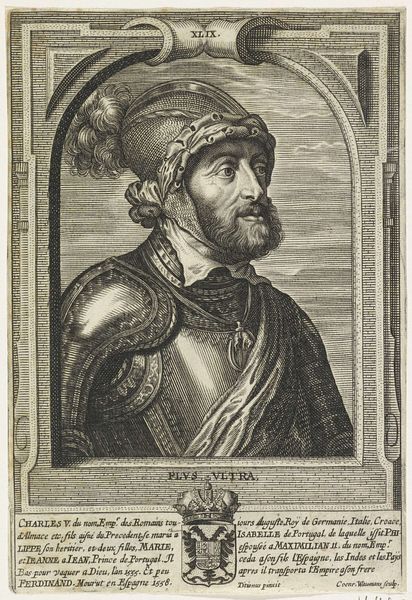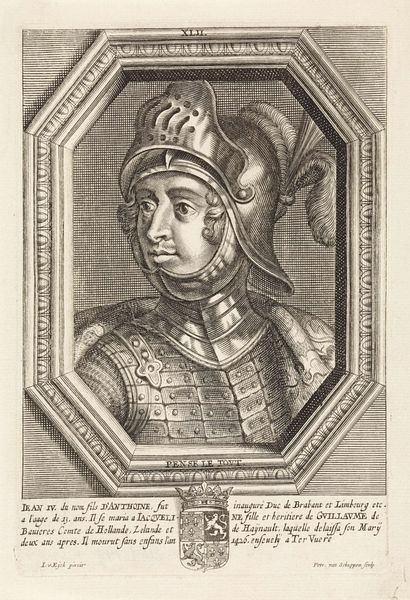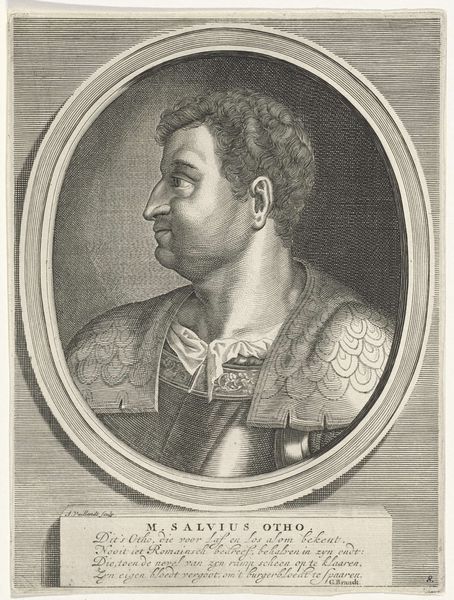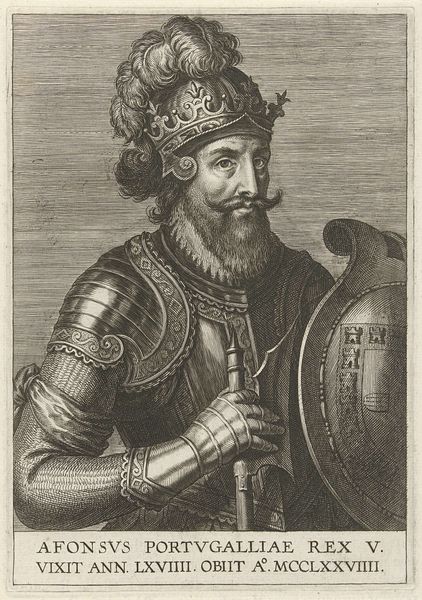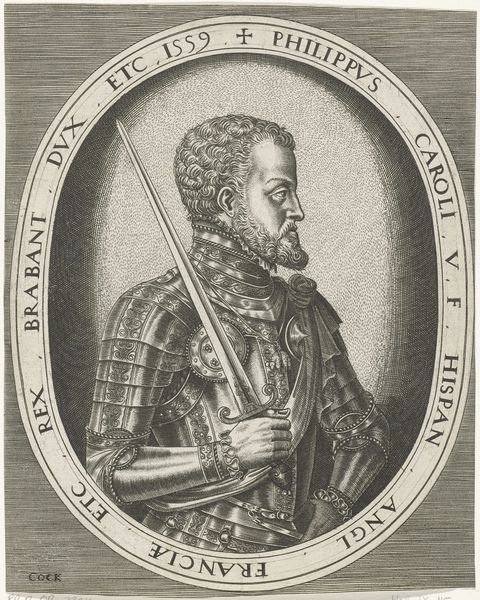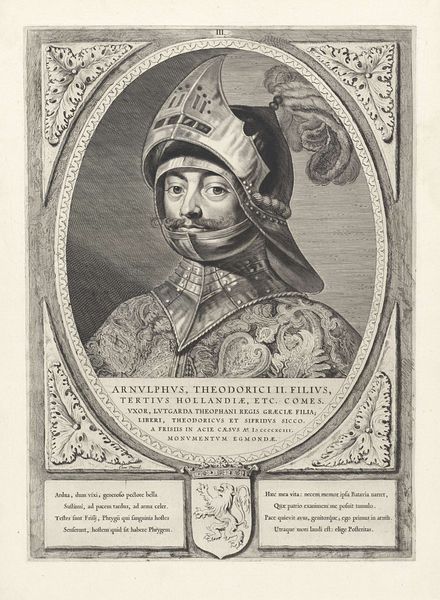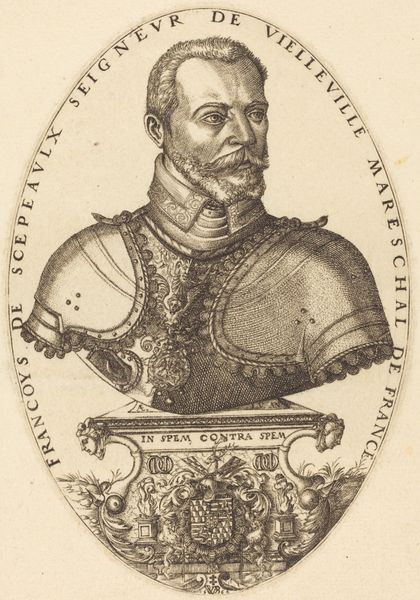
drawing, graphite
#
portrait
#
drawing
#
romanticism
#
graphite
#
portrait drawing
#
history-painting
#
academic-art
Copyright: Public domain
Curator: Let's delve into this graphite drawing titled "Leszek the Black," a portrait by Jan Matejko. What strikes you first? Editor: The detail, undoubtedly! Despite the monochrome palette, there is an undeniable intensity. The figure, presumably Leszek, seems both regal and weary. His crown is ornate, and the chainmail is meticulously rendered, yet his gaze seems… heavy. Curator: Heavy is an interesting word choice. Matejko, famed for his history paintings, often imbued his subjects with complex emotions, reflecting Poland's tumultuous past and national identity formation through art. Editor: Indeed. Seeing Leszek bearing this armor and the symbolic shield depicting the Polish eagle… he seems burdened by the responsibility and expectations placed on him. His race is also something to think about here. Is this simply how the artist thought he would look, or is there more going on in how race and royalty play here? Curator: Matejko completed several such drawings. It is important to realize his work contributed to the shaping of national narratives. His portrayals, however historically grounded, were designed to evoke patriotism and reflect his socio-political visions of the Polish people. This might explain Leszek's particularly stern and determined look here. Editor: Stern but maybe also tired? The drawing offers a striking juxtaposition. This man, draped in symbols of power, looks exhausted by their weight. Are we celebrating or lamenting leadership here? The use of graphite adds a kind of rawness to this portrait; its sketch-like quality reveals rather than obscures. Curator: His decision to use drawing as a primary medium makes the final images much more politically raw because it removes any grandeur of painting which may make the images even more patriotic to the people viewing it. Editor: Definitely. Seeing it now, knowing its cultural weight within Matejko's body of work, invites conversation on the power and constraints leaders navigate even today. Curator: It certainly does. It’s a potent reminder that history, like art, is never neutral but a constantly shifting reflection of ourselves and our society.
Comments
No comments
Be the first to comment and join the conversation on the ultimate creative platform.
